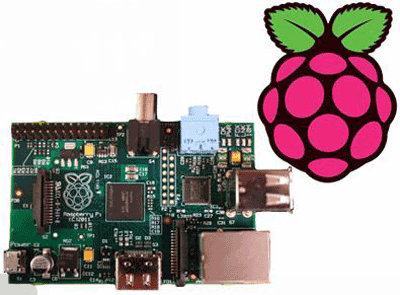New Tech Press
The effort to close the Digital Divide — the separation between those who can and can't afford access to the Internet — has been a point of frustration for government and social activists for more than a decade. However, the rousing success of the Raspberry Pi computer launch on Leap Day could significantly close the Divide with the right price point and distribution strategy and punch a hole in commercial efforts to derail low-cost computing.

The United Nations established the World Information Society Day (May 17) (http://www.itu.int/wtisd/) for the first time in 2001 and since then there has been a steady stream of programs and products aimed at closing the divide, from the One Laptop per Child (OLPC) non-profit organization to Intel's Classmate PC. Even the popularity of netbooks and tablets demonstrated the demand for low cost “ports” to the internet. None, however, have made a significant dent in the problem. In the US, where the gap is the smallest, 22 percent of the population still lacks internet connectivity, a figure that has barely improved since 2000 (Internet World Stats)(www.internetworldstats.com/stats.htm).
Several issues continue to dog efforts to close the divide: usability, price and supply. OLPC entered into competitive issues with suppliers early on and is still struggling to bring the devices to below $100 without significant charitable and government subsidy. Intel, in particular, cut ties with the organization over the price per unit and launched the Classmate PC with greater functionality, and made it difficult to the OLPC offerings to gain significant market presence.

The long-anticipated Raspberry Pi, (http://bit.ly/tG7VqY), however, smashed the $100 barrier with a $35 fully-Internet-enabled credit-card-sized device, manufactured and distributed by several sources, including Premier Farnell. The current version is in one, uncased configuration, powered by an ARM-based Broadcom system on chip, with two USB slots, 256MB of RAM, HDMI slot, SD memory card slot and an Ethernet port, running Fedora Linux OS.
The primary target for the device is education, especially below the college level, but according to Jeff Jussel of element14.com, Premier Farnell's engineering community, the foundation's wants to build an open user community of experienced engineers first, to provide essentially free resources for students to learn how to use the technology. “The Foundation really designed this for education – to give schools and students an exciting platform for rekindling interest in programming. I think this is the most exciting computing platform for education since I had my first Apple IIe as a kid.”
Hence the partnership with electronics distributors rather than chip and system manufacturers. Enter the first problem: While both the foundation and distributors anticipated a significant demand for the product, they had no idea how big it would be.
“We made a limited run,” said Jussel, “just to see how fast they would go and we knew we would run out of inventory early on. We thought initially demand would be in the thousands.” That was an understatement. Worldwide demand exhausted the inventory in two hours and caused the servers for both the distributors and the foundation to crash briefly.
“Demand was actually in the 10s of thousands,” said foundation co-founder and executive director Eben Upton. “We knew we had something special. We just didn't know how special.”
Orders came in primarily from the developer community, as anticipated, leaving very little for education at the outset. Upton admitted that marketing efforts to education have been focused almost exclusively to the United Kingdom where the government has provided significant support. In the US, however, not only is Raspberry Pi seen as a misspelled dessert, alternatives like Beagleboard and Cotton Candy are also unknown outside of colleges. New Tech Press contacted several secondary education technology leaders who did not know of any of the options.
Woodside High School in Redwood City, California has been nationally recognized for its innovative approaches to using and teaching technology, including being competitive in national robotics competitionshas yet to use any of the options, and the faculty had not yet heard of Raspberry Pi. David Reilly, principal at WHS said options like Cotton Candy, in excess of $100 would be outside of the budgetary restraints of even the most well-off schools, but the $35 Raspberry Pi might actually been doable.
Jussel said Premier Farnell, through its element14 online community, ( www.element14.com/community/groups/raspberry-pi?ICID=hp_raspberry) will soon be launching a program in the US not only to raise awareness of the technology, but to get samples into the hands of educators by the beginning of the start of the new school year.
Once the education market is penetrated, Upton hopes the next step is attacking the Divide. Upton said the foundation's program began 6 years ago to deal with an ever increasing lack of programming skills of students entering the Cambridge University computer sciences programs. A study showed that many of the students had no regular access to computers prior to enrolling, a problem that seems to be increasing in families below the poverty level in developed countries. The availability of a fully functioning, low-cost computing system could rapidly close the gap as long as students had the ability to learn how to use them.
In the U.S., according to the AC Nielsen company, low-income minority families are more likely to own smart phones and high-definition televisions, than middle income white families, but less likely to own a personal computer. The families use the phones as their internet connection because the phone and data service are more cost effective than a high-speed cable connection. Upton said the Raspberry Pi was specifically designed to be able to be plugged into a phone, keyboard and HDTV to keep the overall cost for the system below $100.
Now that the distribution of the Raspberry Pi has been provided, how will it be delivered to the third world? Join the conversation and bring your ideas to element14.com ( www.element14.com/community/groups/raspberry-pi?ICID=hp_raspberry) ■
Advertisement
Learn more about element14Footwasher Media





